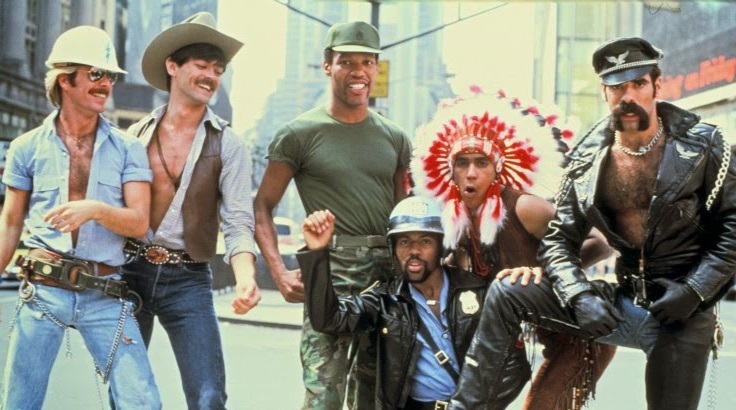How Village People brought gayness to the masses
Juno Dawson examines the iconic disco group's enduring legacy.
By Will Stroude

We do not camp-shame here at Attitude, and although the opening chords of Y.M.C.A. set my teeth on edge faster than fingernails being dragged down a blackboard, it’s time to examine the curious pop sensation that was Village People. And, although the band is widely regarded as the gayest gay musical gayism ever, we need to ask the question: did they do more harm than good?
In 2001, I was still presenting as a young gay man in Bangor, North Wales. Monday nights at the SU club were “Carwash,” and, without fail, the mixtape would throw out massive disco hits Y.M.C.A, In The Navy or Macho Man.
But rather than feel celebrated for my queerness, I instead felt mocked as the sports teams turned the camp up to 11, crudely mincing around and spelling out words with their arms. As such, my relationship with Village People is, shall we say, strained. I’ll leave it to you to decide if they were actually designed for LGBT+ people — or at least celebrate queer life.

Since the Seventies, there has been a revolving door for members but to my knowledge only two of the original Village People were out as gay: Filipe Rose (the Native American) and Randy Jones (the cowboy). A little like the Pussycat Dolls, Village People were dancers formed around lead singer Victor Willis (the cop/naval officer) who, for a time, was married to The Cosby Show actress Phylicia Ayers-Allen (now Rashad).
The Svengali behind the group was French disco producer Jacques Morali, and he was gay. Already a minor success in his field, he was inspirated while at gay ball “Les Mouches” in New York’s Greenwich Village. Seeing the various gay tribes — leathers, uniforms, jock — he decided to form a band designed to appeal to a gay audience. This was the Seventies — those last care-free days before HIV and Aids took hold. When he received a demo tape of Willis’s vocals, Morali decided to base the act around him.
Rarely is art created specifically with a gay audience in mind, but Morali aimed directly for the pink pound. The first single the band released was San Francisco (1977), closely followed by a cover of I Am What I Am and Macho Man (both 1978) which proved to be their breakthrough. It’s hard to know if Morali intended Village People to cross over into the mainstream, but cross over they did and Y.M.C.A and In The Navy were enormous mainstream hits — the former going platinum in the UK and the US.
Morali died in 1991, but lived to see the band wane in popularity alongside disco music. They attempted a comeback with 1985’s Sex Over the Phone (notably banned by the BBC) but, with an ever-changing line-up, the group descended into legal squabbles over who got to perform under the Village People name.
Today, some original members still perform as Sixuvus, and Willis won a decades-long battle to receive royalties.
But it can’t be denied that they’ve left a legacy. Morali, briefly, created something instantly recognisable, something that was truly “ours” — and is for ever linked to our community — whether we like it or not.
And if the rugby team at Bangor University were prepared to simulate anal sex on the dancefloor during Y.M.C.A, perhaps the Village People really did bring gay to the masses.
Selected back issues of Attitude are available to download here.

